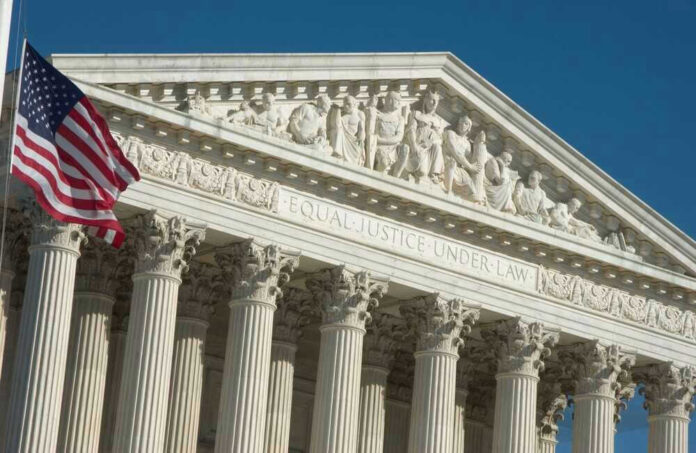
The Supreme Court just handed President Trump a massive victory in his battle to restore executive authority over the bloated administrative state, allowing him to fire a Democratic FTC commissioner despite 90 years of legal precedent protecting these unelected bureaucrats.
Story Highlights
- Supreme Court allows Trump to remove Democratic FTC Commissioner Rebecca Kelly Slaughter pending December hearing.
- The decision directly challenges the 1935 Humphrey’s Executor precedent that shields independent agency heads from presidential removal.
- Trump fired Slaughter and Alvaro Bedoya in March for policy disagreements and “inconsistency with Administration priorities.”
- Conservative majority signals willingness to expand presidential control over independent regulatory agencies.
- Victory represents a major step toward dismantling unaccountable administrative state bureaucracy.
Trump Challenges Decades of Administrative State Protection
President Trump fired FTC Commissioners Rebecca Kelly Slaughter and Alvaro Bedoya in March 2025, citing fundamental policy disagreements and their failure to align with his administration’s deregulatory priorities. This bold move directly challenged the 1935 Humphrey’s Executor precedent that has shielded independent agency commissioners from presidential removal without specific cause, like inefficiency or malfeasance. The firings represent Trump’s broader strategy to dismantle the unaccountable administrative state that has operated beyond democratic control for decades.
Lower Courts Initially Block Presidential Authority
The District Court for the District of Columbia initially sided with the administrative state establishment, ruling Slaughter’s removal unlawful and ordering her reinstatement in July 2025. The court issued a permanent injunction against further presidential interference, demonstrating how entrenched the deep state bureaucracy has become. This decision reflected the judiciary’s historical deference to the independence of unelected agencies over constitutional executive authority, setting up an inevitable clash with the Supreme Court’s conservative majority.
Supreme Court Delivers Victory for Constitutional Government
On September 22, 2025, the Supreme Court issued an emergency order allowing Trump’s removal of Commissioner Slaughter to stand pending a full hearing scheduled for December. The divided decision saw all three liberal justices dissent, revealing their commitment to protecting unaccountable bureaucratic power over democratic governance. This preliminary victory signals the Court’s willingness to reconsider foundational administrative law precedents that have insulated government agencies from voter accountability through elected leadership.
Broader Implications for Draining the Swamp
The Supreme Court’s decision could fundamentally transform the administrative state by allowing presidents to remove commissioners from independent agencies like the SEC, FCC, and NLRB at will. This would restore constitutional executive authority over the sprawling regulatory apparatus that has operated as a fourth branch of government. Legal experts recognize this represents a seismic shift toward democratic accountability, ensuring regulatory agencies serve the American people’s priorities rather than advancing partisan agendas inconsistent with election results.
The December Supreme Court hearing will determine whether the Court overturns Humphrey’s Executor entirely, potentially ending nine decades of administrative state protection from presidential oversight. This case represents a critical test of whether America returns to constitutional governance or continues enabling unelected bureaucrats to undermine the will of voters and their chosen representatives.















